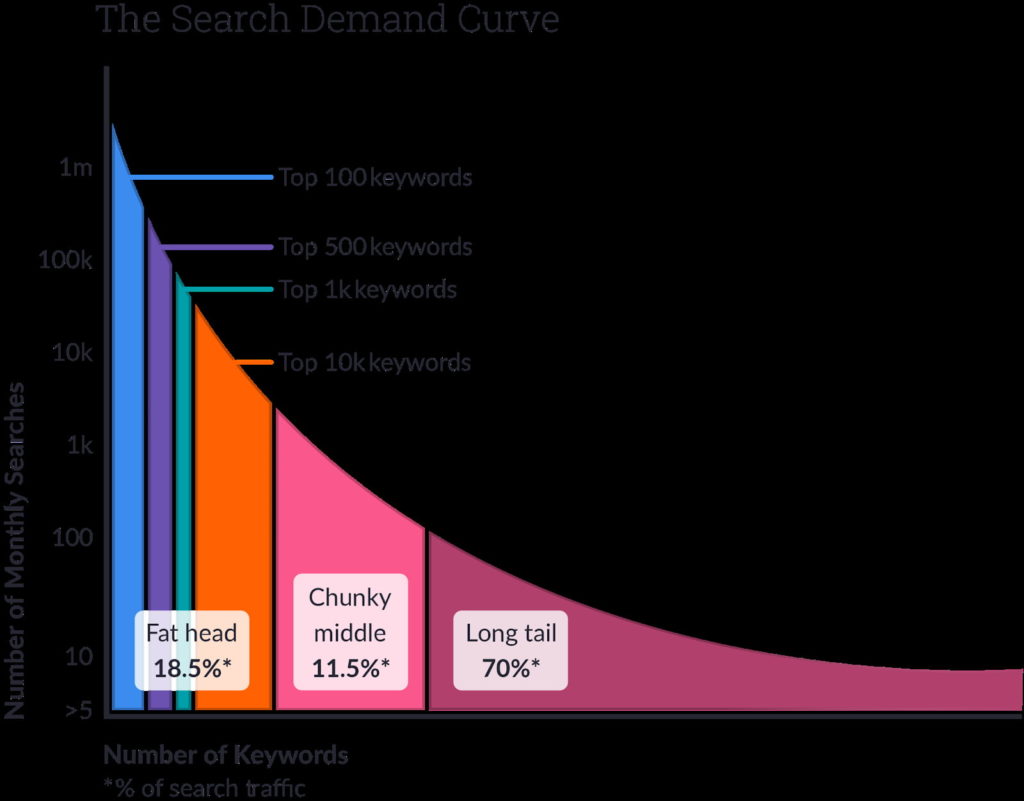Content marketing is a leading marketing strategy that works exceptionally well for B2B and B2C markets. It helps you drive traffic, generate leads and sales, boost brand awareness, and engage with your target audience.
But how to create content?
Content creation is one of the major tasks that you have to do in content marketing. If you are new to content creation and not sure how to create content, the following guide is for you.
If you are new to content creation and have no idea where to begin, how to create content that will be loved by readers, and how to make content marketing work for your business, you are at the right place.
How to Create Content?
There are two ways to create content for your blog, website, or business:
- Write content on random topics with no homework and backend working. Keep publishing content consistently because that’s what we know works best
- Develop a content creation plan, have a detailed and well-defined process, and publish content strategically to meet marketing goals.
It is evident what’s the right way to create content.
You need to have a well-defined and documented plan with clear steps and processes that your team should follow to keep pushing meaningful content.
Here is how the content creation process looks like:
- Keyword research
- Topic and title generation
- Writing and editing
- Publishing and scheduling
- Tracking
1. Keyword Research
Content creation is all about finding the right keywords to target. You need to identify keywords that your target audience uses to find the solution to their problems.
You can use the following techniques to identify target keywords for content creation:
- Keyword research tools (Google Keyword Planner, Ahrefs, Moz, and SEMrush)
- Buyer personas (If you don’t have created buyer personas already, use this template to create buyer personas)
- Competitor spying. Use a tool (such as SpyFu, iSpionage, or any keyword research tool) to see what keywords your competitors are targeting, how much traffic they’re receiving, how famous their content is, and other essential metrics. This will give you a good idea of what keywords to target.
Targeting long-tail keyword is the best option as more than 70% of traffic from search engines go to long-tail keywords:

A long-tail keyword might have fewer search volume but when you are targeting hundreds of them, you’ll receive a great chunk of organic traffic.
2. Titles and Topics
Once you have identified a list of keywords, it is time to group them into titles and topics. You need to group similar and related content topics together and create a well-structured form.
Here is how topic clustering looks like:
Follow these steps to develop clusters:
- You need to identify main topics from the list of keywords
- Identify a pillar content for each topic that will be the core content piece relating to your product or business
- Create titles for the rest of the keywords in each cluster that will support the pillar content.
This type of content structuring will help you stay organized and maintain a decent website structure. Importantly, it improves ranking as search engine crawlers can easily identify related topics and content.
3. Writing and Editing
When topic clusters have been created, you are all set to start the writing process. Writing doesn’t just refer to text rather it includes all types of content writing. If you are creating an infographic, start collecting data for it. Or, if you are creating a video, start producing its script.
In any case, here are a few writing tips to create engaging content:
- Create an editorial calendar to keep the writing process organized and managed. Use an Excel sheet to create one for your business. Here is a free template
- Create different content types including blog posts, images, infographics, videos, podcasts, etc.
- Use simple language and avoid jargons
- Come up with better content than your competitors
- Be unique and informative
- Have your voice
- Write for humans – not for search engines.
Once done with the writing, assign content to your editor. Proofreading and editing are essential to improve readability, fix errors, and ensure consistency.
4. Publish
One reason why an editorial calendar is essential for content creation is that it helps you publish content regularly. It shows you the status of each piece, who is working on it, when it will be ready, and all other details.
On-page SEO optimization is an important part of the publication process. Use an on-page SEO plugin to optimize content for search engines. This includes title, meta description, keyword density, alt text, featured image, readability, internal links, external links, and more.
Here is a list of critical on-page ranking factors that you must consider before publication:
No matter how great your content is, if it isn’t optimized, it won’t rank well. Poor ranking means your target audience won’t be able to find it through search engines.
Don’t let this happen with your content.
Always optimize your content before publishing and/or scheduling it.
5. Track Performance
Tracking content performance is crucial for content success. Analyzing content is a straightforward task. Google Analytics is the best analytics tool that you can use to measure content performance on your website.
All you have to do is add tracking code on your website and leave the rest on Google Analytics. Once it starts tracking traffic, you’ll be able to see best-performing content, average time spent per page, bounce rate, and several other key metrics. This will help you identify topics and titles that your audience loves.
You can use Campaign URL Builder to track content on external websites. It is a quick way to create a URL for any campaign you are creating:
It is a very handy tool that makes tracking a lot easier.
Conclusion
How to create content that will drive traffic, conversions, and boost engagement is indeed a tough task. Having a system for developing content will streamline the process, save time, and you’ll be able to consistently produce quality content.
Content creation is one part of the content marketing puzzle. Once you create and publish content, promote it so it starts ranking in search engines.
Featured Image: Pexels






